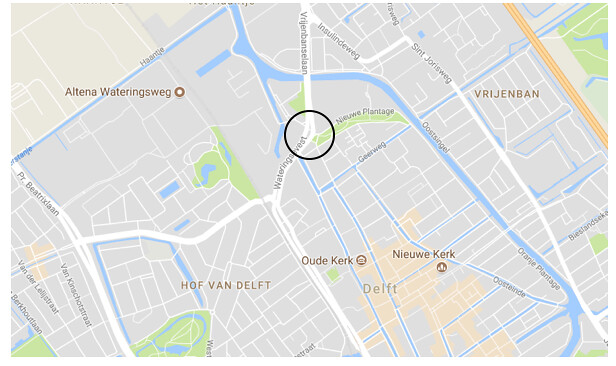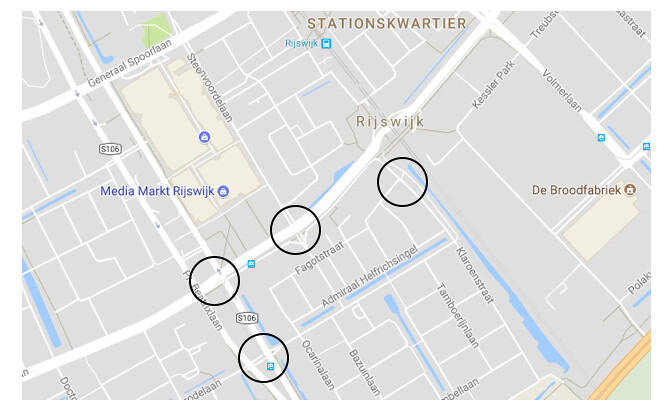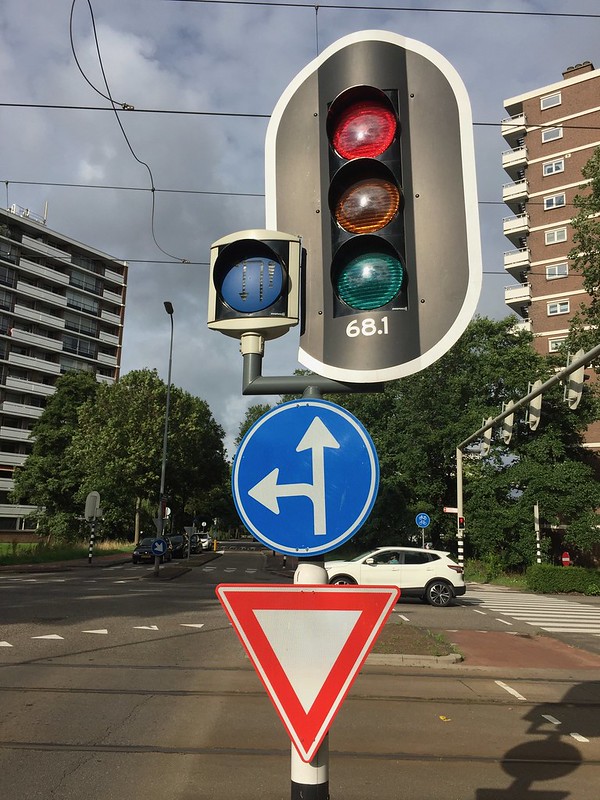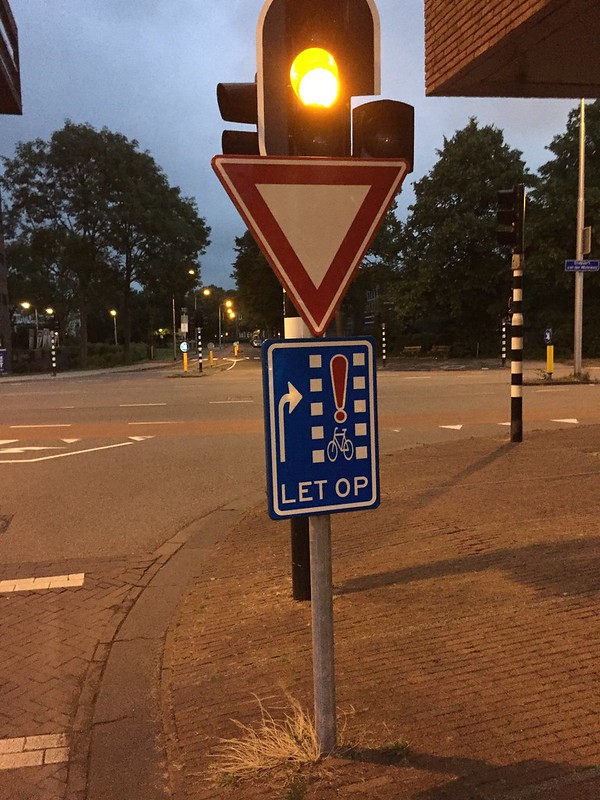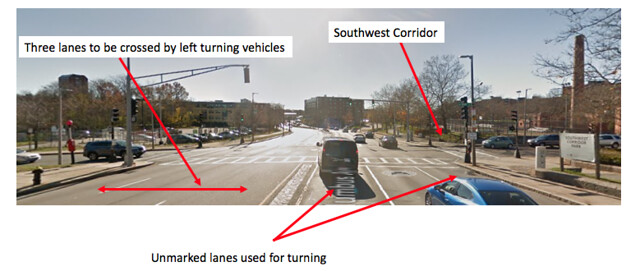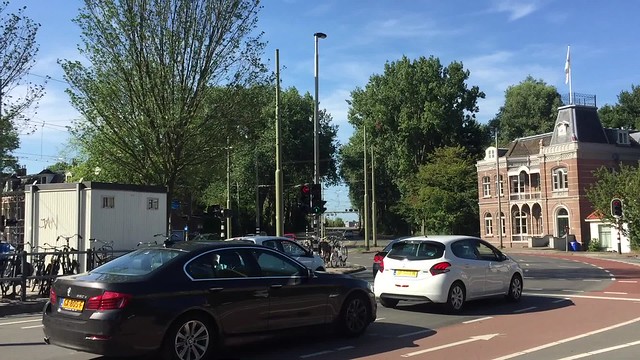3.3 Protected left turns (and right ones too) [Emma]
Delft Intersection Observed
Rijswijk Intersections Observed
Systematic safety is a Dutch approach to make roads safer. Instead of designing roads in a reactive manner, systematic safety aims to design roads so they’re preventative by implementing designs that physically prohibit dangerous road behavior and that allow for flow.
At multi lane signalized intersections, such as the intersection of Nieuwe Plantage and Waterinsevest, the systematic safety principle of predictability and simplicity is applied. Left turning vehicles at this intersection, and at all multilane intersections, are at a higher risk of crashing with vehicles, bikes, and pedestrians because of the number of lanes they need to cross. Vehicles turning left at multilane intersections without protected signals have to search for an adequate gap in traffic coming from multiple lanes. Without a left turn lane or signal, vehicles often feel rushed and are more likely to make mistakes that may lead to crashing into oncoming traffic. Once a vehicle decides that there is a large enough gap to turn, they often forget to also consider the pedestrians or bikes that may be crossing.
To make an intersection like Nieuwe Plantage at Wateringsevest predictable for both left turning vehicles and other vehicles, left turn only lanes are implemented so it is clear what direction each vehicle at the intersection is going. At most multilane intersections in the Netherlands that have left turn lanes, left turn signals are also used. This design feature makes turning at an intersection simple. Drivers turning left don’t have to make any decisions that could potentially harm others as all they have to do is wait for the left turn signal to turn green. This removes any chance of vehicular collisions, as the signal is timed so opposing traffic will not be able to go while left turns are protected. And if pedestrians and bicyclists are allowed to go while left turns can drivers have plenty of time to see them as they don’t have to worry about oncoming traffic and searching for gaps.
Intersection of Nieuwe Plantage at Wateringsevest (Delft)
It isn’t necessary for all left turn lanes to have protected signals. Some intersections have low turning movement volume or don’t require cars to turn over many lanes. In these cases, a signal is not needed as the turn is safe enough with a dedicated lane. People still make mistakes at intersections with no protected turn signal so there are typically other warning and preventative measures that prevent vehicles from turning without slowing down and making sure there are no conflicts, such as the signal and sign pictured below.
Turning Warning Signal
Turning Warning Sign
Protected right turn lanes are not as common but are seen in the Netherlands more than in the United States. Often times a protected right turn will be at intersections where right turn traffic is heavy and so are pedestrian and through bicycle traffic so without the protected turn there would be a higher chance of conflict. Right turn lanes are much more common and, as with left turn lanes, there are typically warning mechanisms to prevent drivers from turning without paying attention to pedestrians and bicyclists.
Protected left turn lanes in the United States are common but not as common as they should be. The permitted left turn lane (when a left turn has no protected signal) where cars have to cross multiple lanes is way too common and is what needs to be improved upon in the United States. There are multiple intersections, especially in Boston, where protected turn lanes, or even just a separate turn lane, could ease queueing and make the intersection much safer. At Boston intersections where there is a turn signal, the green time for the signal is often very short. The intersection of Heath Street and Columbus Avenue in Boston could greatly benefit from a protected left turn going Southbound and potentially a right turn lane in both the Northbound and Southbound directions. Going Northbound, there is a protected left turn lane, which is important as cars turning left have to cross three lanes of traffic and there is a lot of foot and bicycle traffic crossing along the Eastbound approach of Heath Street continuing from the Southwest Corridor. The Southbound approach has no turn lanes let alone a protected signal. Simply adding turn lanes to this approach would greatly increase vehicle, pedestrian and bicycle safety on both approaches of Heath Street as it is a multilane intersection in a residential area with a high volume pedestrians and bicyclists.
Columbus Avenue at Heath Street (Boston)

